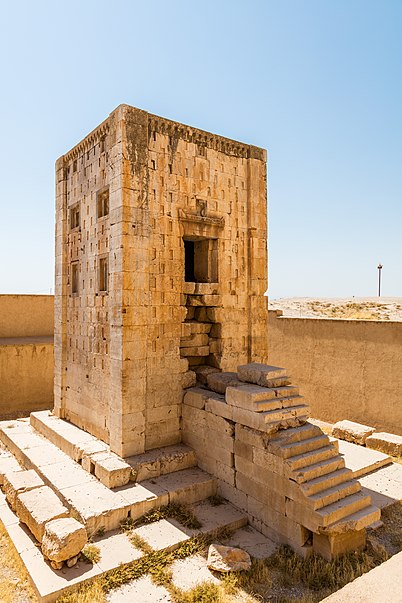Ka'ba-ye Zartosht

Facts and practical information
Ka'ba-ye Zartosht, a remarkable and enigmatic structure, stands proudly at the Naqsh-e Rostam archaeological site near Shiraz in Iran. This ancient edifice, which dates back to the Achaemenid Empire—specifically to the 5th century BCE—has long intrigued historians and visitors alike with its cubic form and monumental scale.
The name, translating to the "Cube of Zoroaster," belies the building's true purpose, which remains shrouded in mystery. It is constructed from white limestone and measures approximately 12 meters in height, with a square base that bears inscriptions from the Sassanian period, suggesting that it may have been repurposed or revered in subsequent eras.
While some theories suggest that Ka'ba-ye Zartosht was a Zoroastrian temple or a royal mausoleum, the absence of a clear entrance or inner chamber complicates such interpretations. Its architectural features, including the stairway leading to the structure's platform and the precise stonework, reflect the sophistication of Achaemenid construction techniques.
Ka'ba-ye Zartosht – popular in the area (distance from the attraction)
Nearby attractions include: Naqsh-e Rustam, Tomb of Darius I, Naqsh-e Rajab, Ahura Mazda and Ardashir I.










